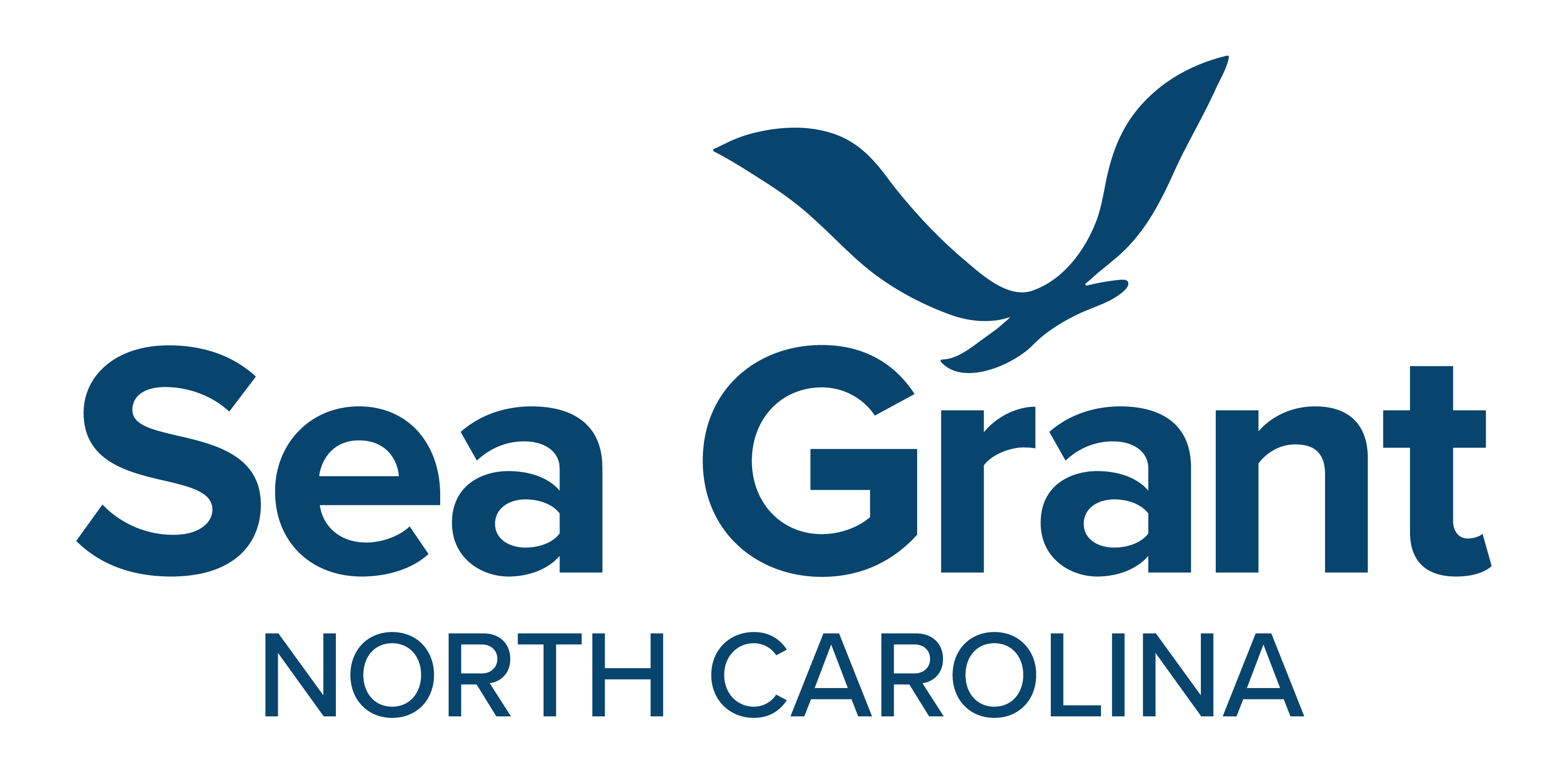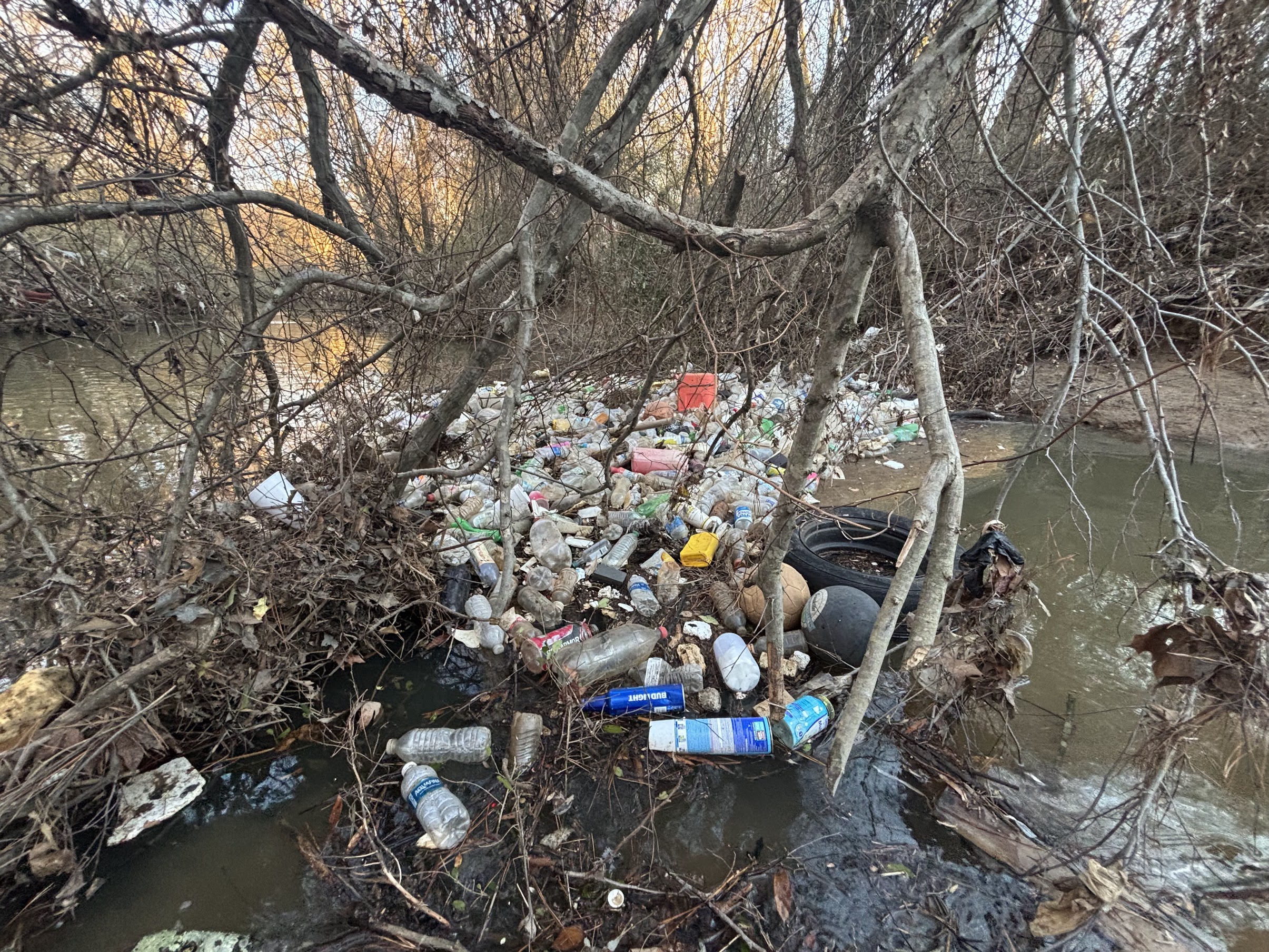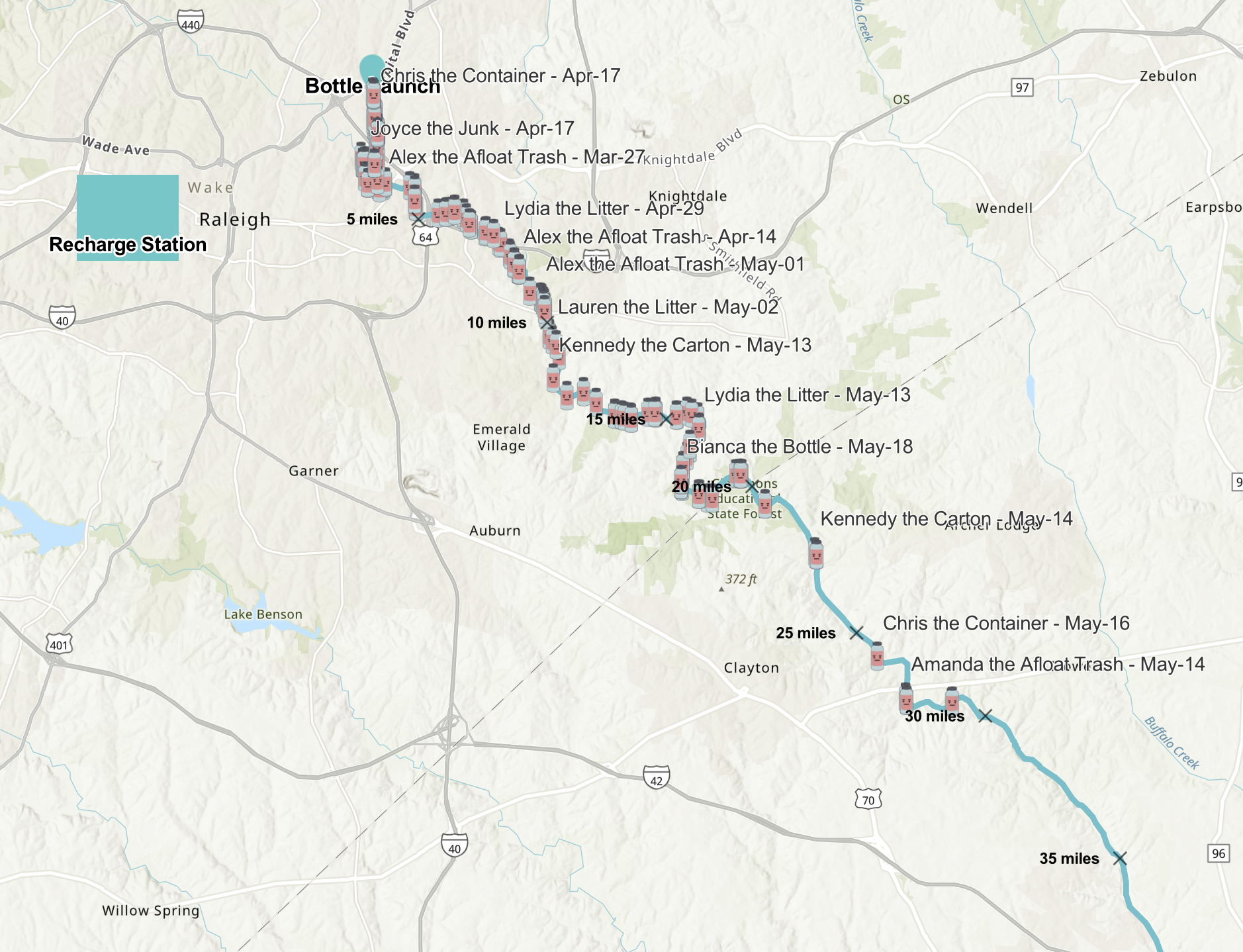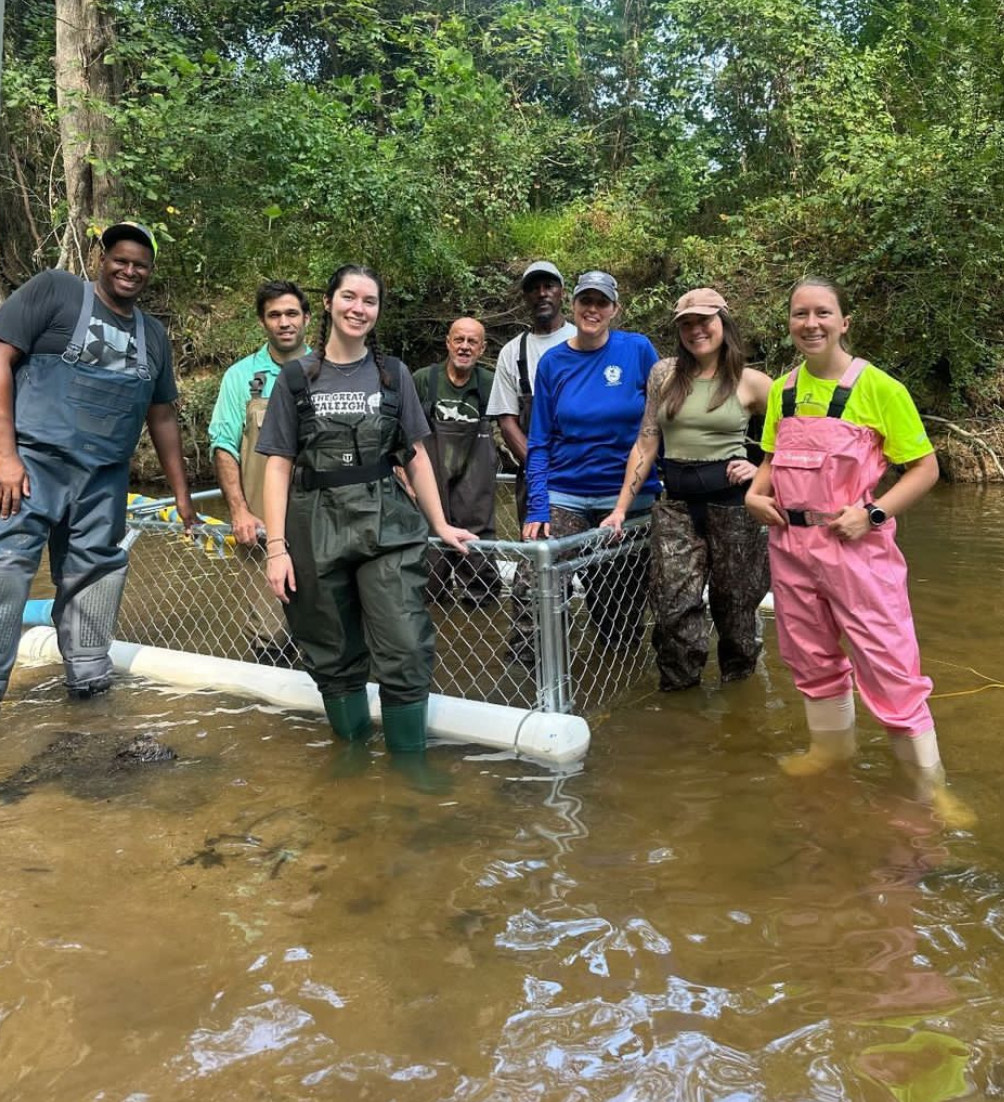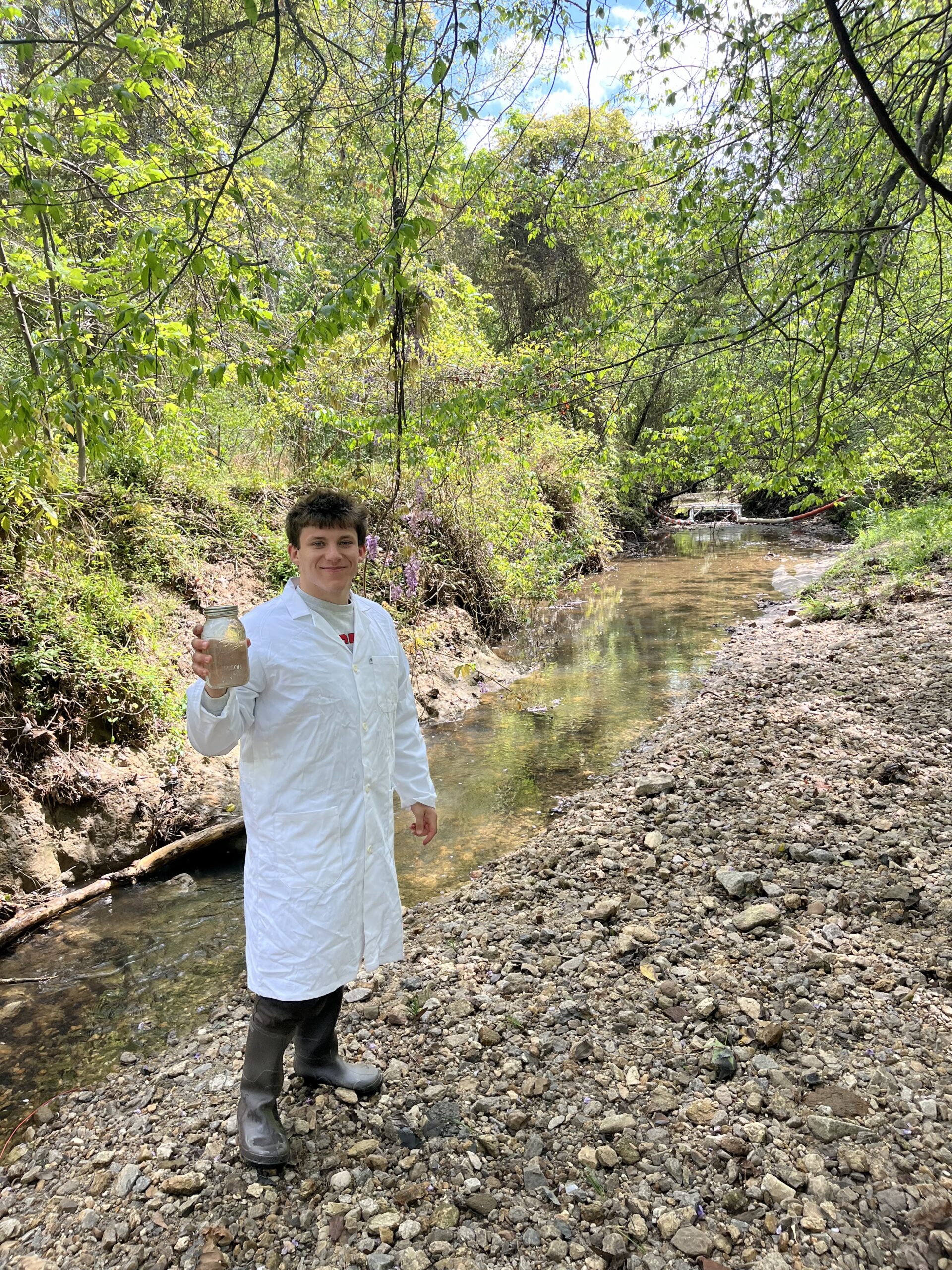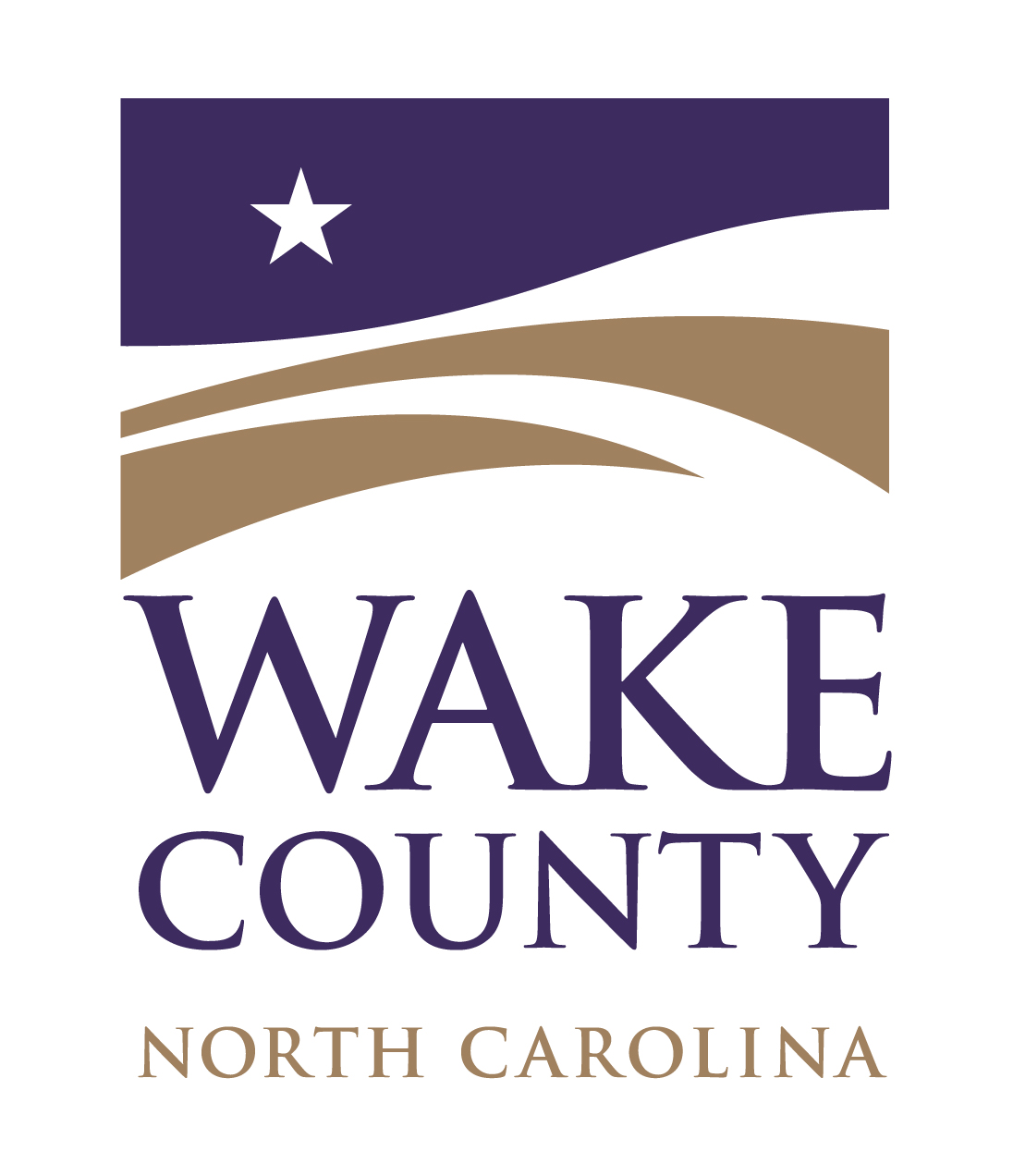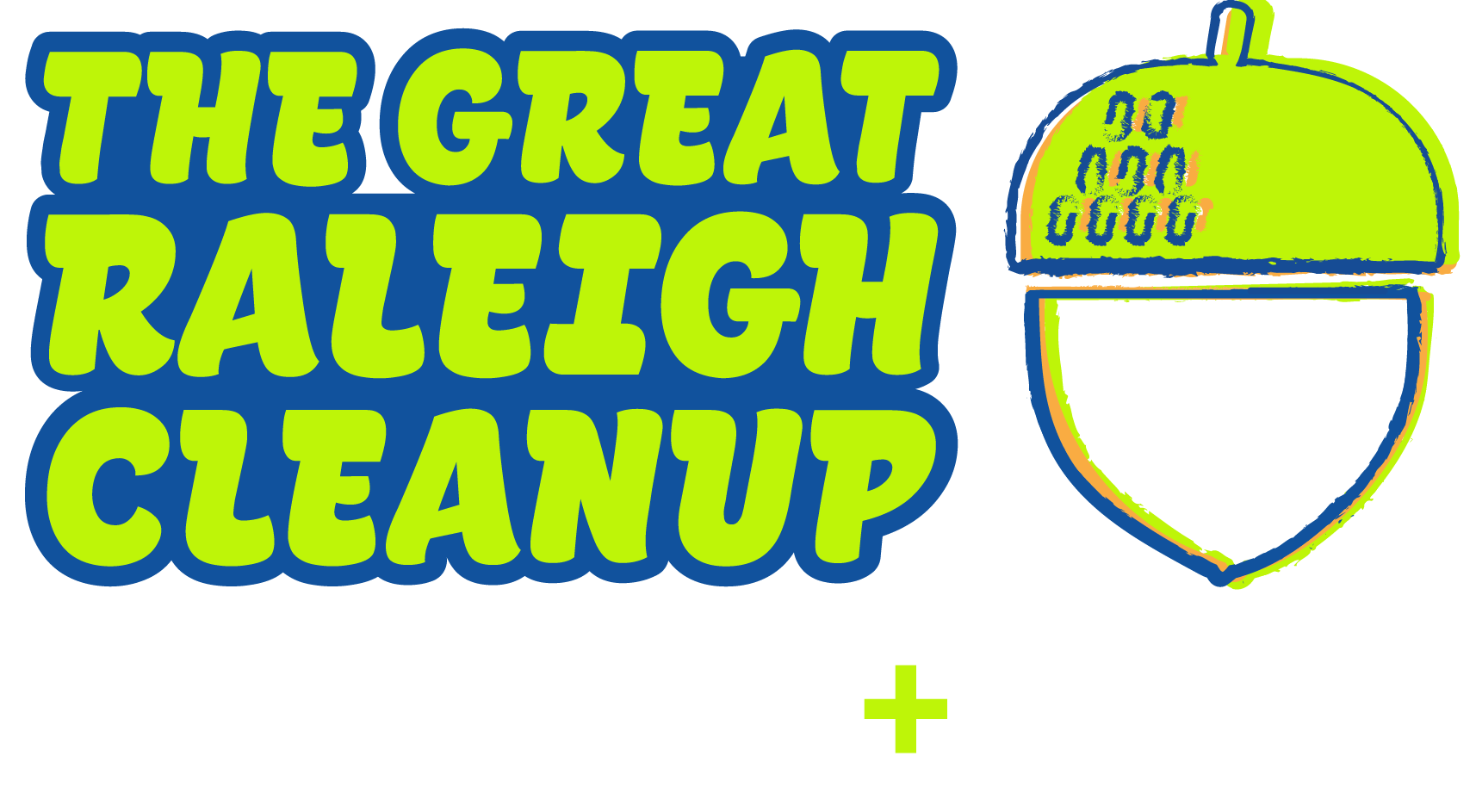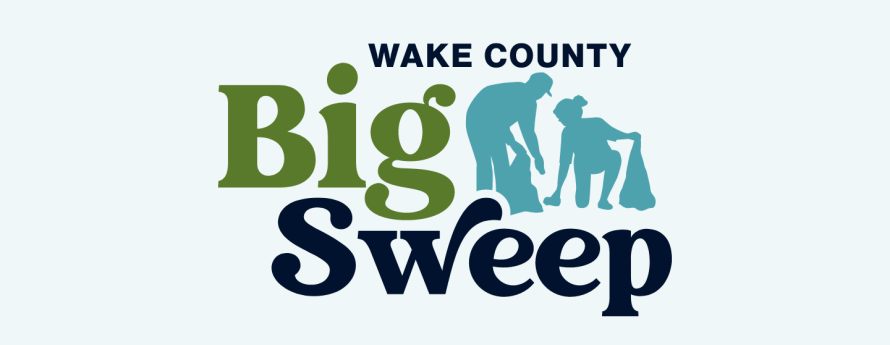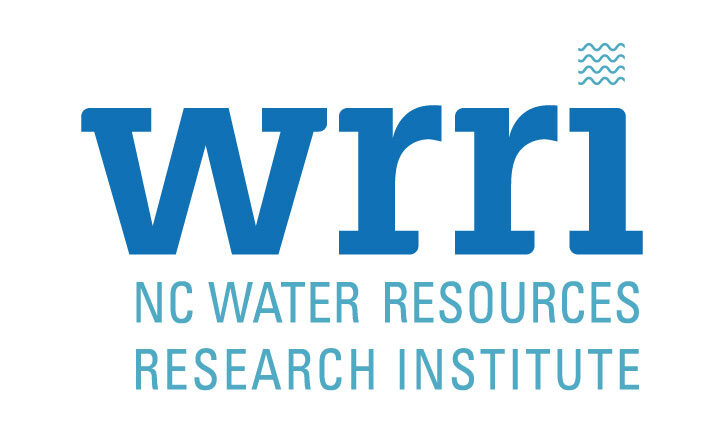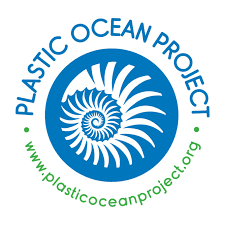Reducing Litter in Urban Waterways
Across Raleigh, communities, researchers, and local partners are joining forces to address litter before it enters our rivers and reaches the coast. By combining science, technology, and public engagement, we’re exploring how trash moves through the Marsh Creek watershed and testing real strategies to stop it at the source.
Much of the litter we see on streets, sidewalks, and in parking lots is made up of single-use plastics, such as bottles, wrappers, and containers designed to be used once and then thrown away. These materials are lightweight, durable, and widespread. When it rains, they don’t stay put. Instead, they are swept into storm drains and streams, traveling through our waterways and eventually reaching rivers and the coast. Together with local partners, researchers, and community members, we’re studying how litter moves through the Marsh Creek watershed—from street to stream—and testing practical solutions to reduce it. From GPS-tracked bottles and in-stream trash traps to behavioral surveys and public education, this project combines science and community action to address stormwater-driven debris. This work aims to create cleaner neighborhoods, healthier waterways, and a toolkit of proven strategies that any city can adopt.
Current Research
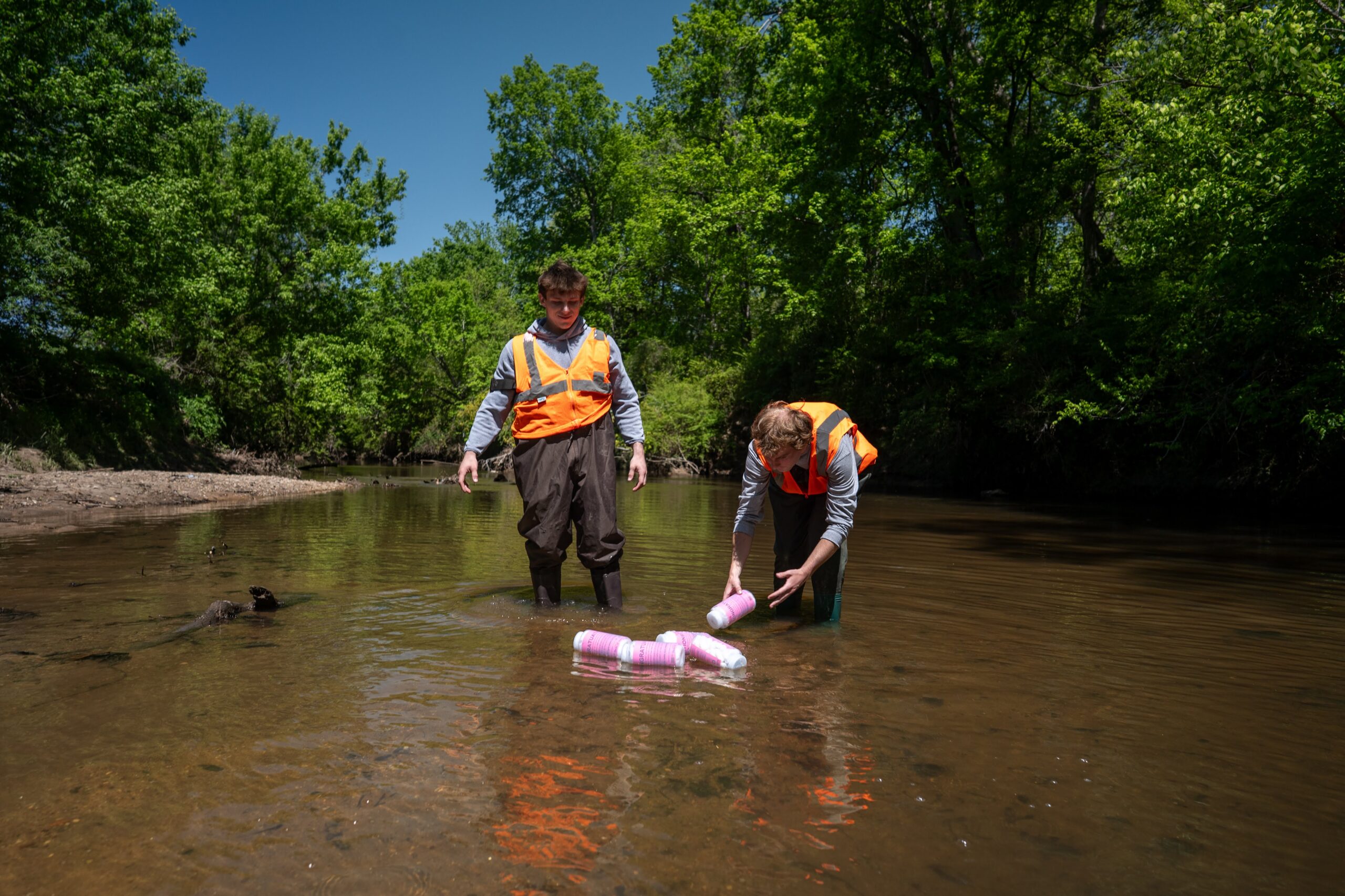
Additional research
Media Coverage
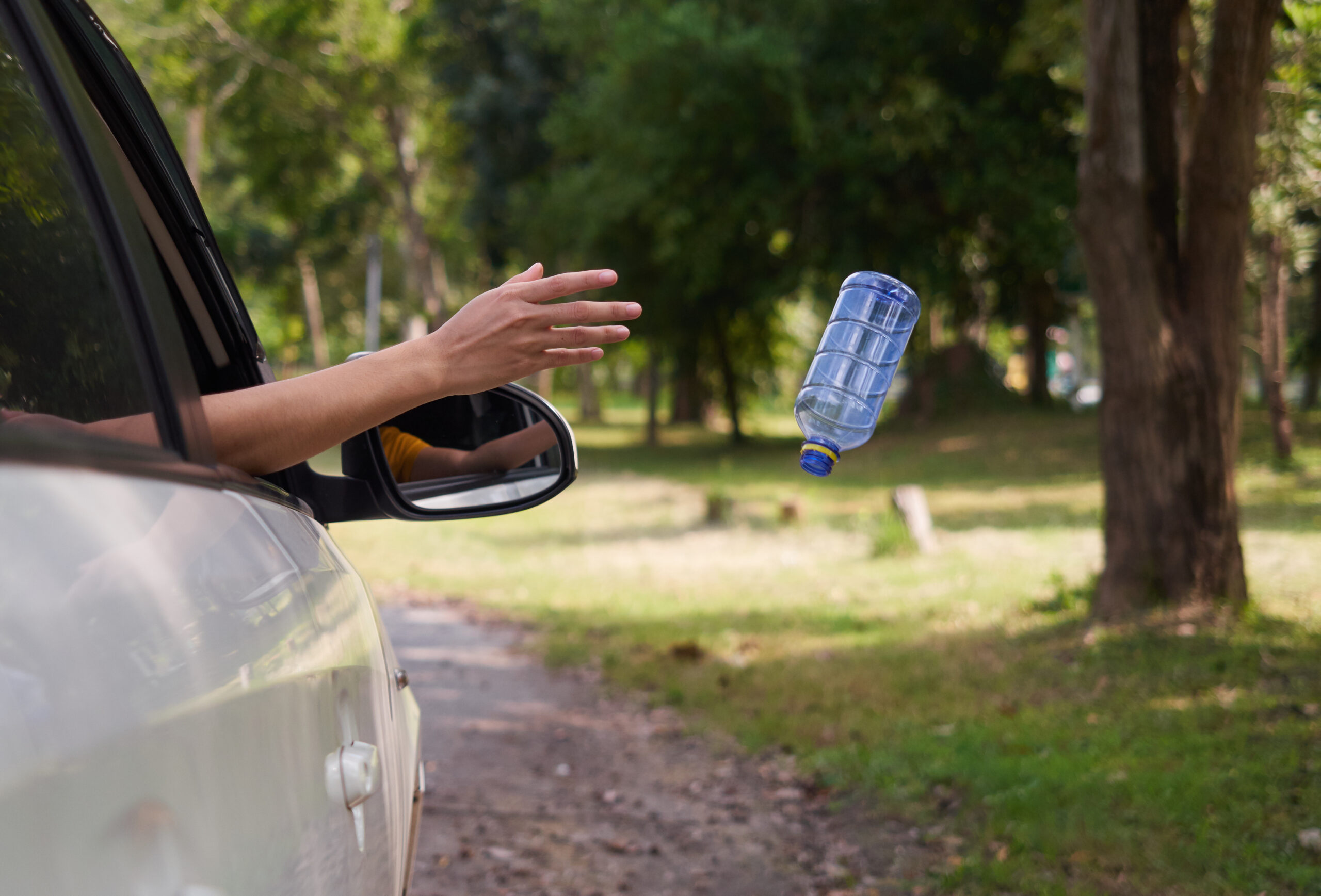
Litter Isn’t Free
In 2023, North Carolinians spent $56.3M cleaning up 14.6M lbs of litter.
Why do people litter?
To stop litter at the source, we need to understand what drives it—and what can actually change it. Part of our research involves working with community members, local groups, and behavioral science experts to uncover how people interact with litter in everyday spaces. We’re surveying every road in the Marsh Creek watershed, mapping trash hot spots and scoring street segments. Then, through interviews and on-the-ground observations, we’ll dig into the motivations, barriers, and habits that shape littering behaviors.
Using proven behavior-change models, we’ll design community-driven solutions—from better signage to smarter trash can placement—to test in one subwatershed. Meanwhile, a nearby area will serve as a comparison site, helping us see what really works. By listening, learning, and acting together, we’re building a cleaner, smarter future—block by block.
